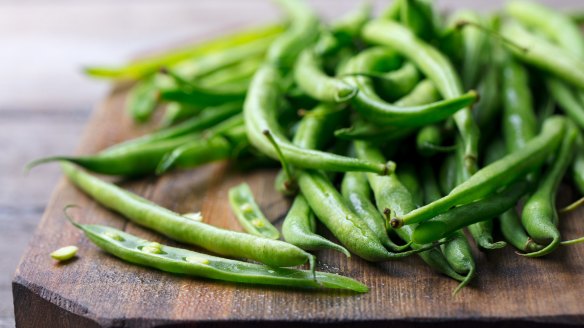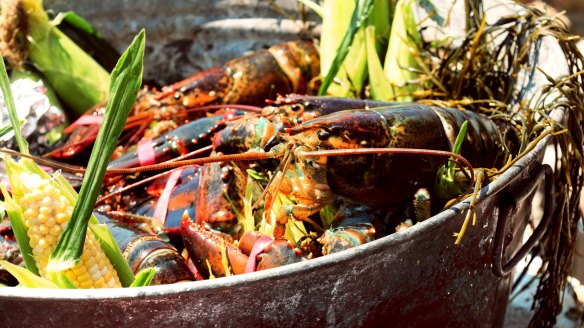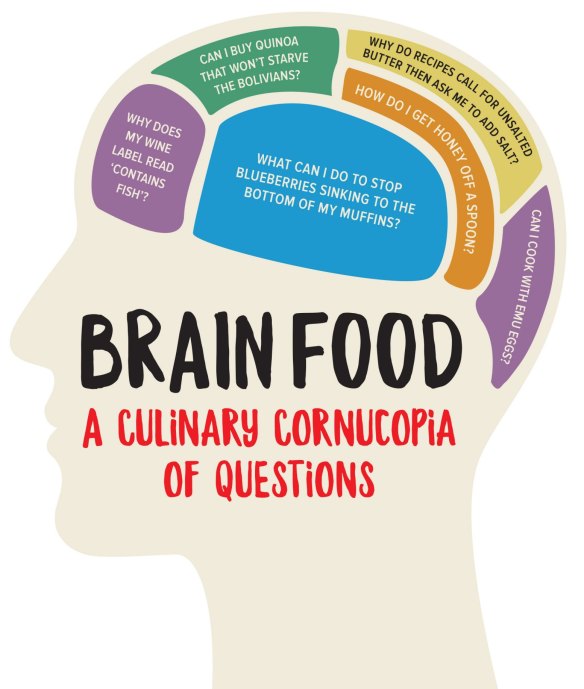How to cook your vegetables so they stay bright green

My 95-year-old mother always adds a pinch of bicarbonate of soda to green beans, peas etc. She says it both keeps the greens bright and tenderises them so they cook more quickly. What does the bicarbonate do? R.Paterson
We grew up in the country. My grandmother lived in the city more than an hour's drive away. We would call her when we were leaving the farm to come to hers for Sunday lunch. I believe that was when she started boiling the vegetables. They were so tender. No resistance to the teeth. At all. She added bicarb of soda, or sodium bicarbonate, to her vegetables. The bicarb makes the water alkaline, which in turn makes the hemicellulose and pectin in the plant cell walls more soluble in water. This makes the veg softer. It also makes some of the compounds in the chlorophyll, the stuff that makes leaves green, leach out. So more of the green compound, which is good for you, ends up in the water.
To retain the green, cook the vegetables in lots of boiling water. There are enzymes in green vegetables that break down chlorophyll, which are released when you cut vegetables or cook them. They are knocked out by heat so putting vegetables into a big pot of boiling water deactivates the enzymes before they can break down the chlorophyll. Briefly steaming greens is the best way to retain their flavour and nutrients.

I want to have a clam bake. Can I do it at home? L. J.
A clam bake is an American culinary tradition learned from the American Indians living on the north-east coast of the US. It is a feast involving the shared gathering of corn, lobster and clams, the building of a fire to heat stones and the digging of a pit in which the food is cooked. Traditionally it was held on a beach where there were both rocks and soft sand to dig the pit and seaweed to line it. If you have a private beach, you'll have no worries.
In a 1969 Time-Life Foods of the World book I found instructions for mesh-lined wooden boxes that are 66 centimetres square and 12 centimetres deep. These are stacked on top of each other and sit in a sea water-filled metal tray over a wood fire. The secret to a clam bake is the seaweed. Kelp is best. I have tried steaming corn and prawns in kelp-lined bamboo baskets and there was definitely the tang of the sea imparted into the corn but it was more an experiment than a recommended way of cooking.

Letters
On quinces E. Mitchell writes: "I make an upside down quince cake by laying quince pieces on the bottom of a cake tin, sprinkling with brown sugar and pouring over a simple pound cake batter. I cook as usual, adding an extra 10 minutes to the cooking time. I allow the cake to cool a little and turn the cake out on a pretty plate and serve with pure cream while it is still warm."
Send your vexing culinary conundrums to brainfood@richardcornish.com.au or tweet to @Realbrainfood.
Brain Food by Richard Cornish is out now from MUP (RRP $19.99, e-book $11.99).
Appears in these collections
- More:
- Food
- Brain food
